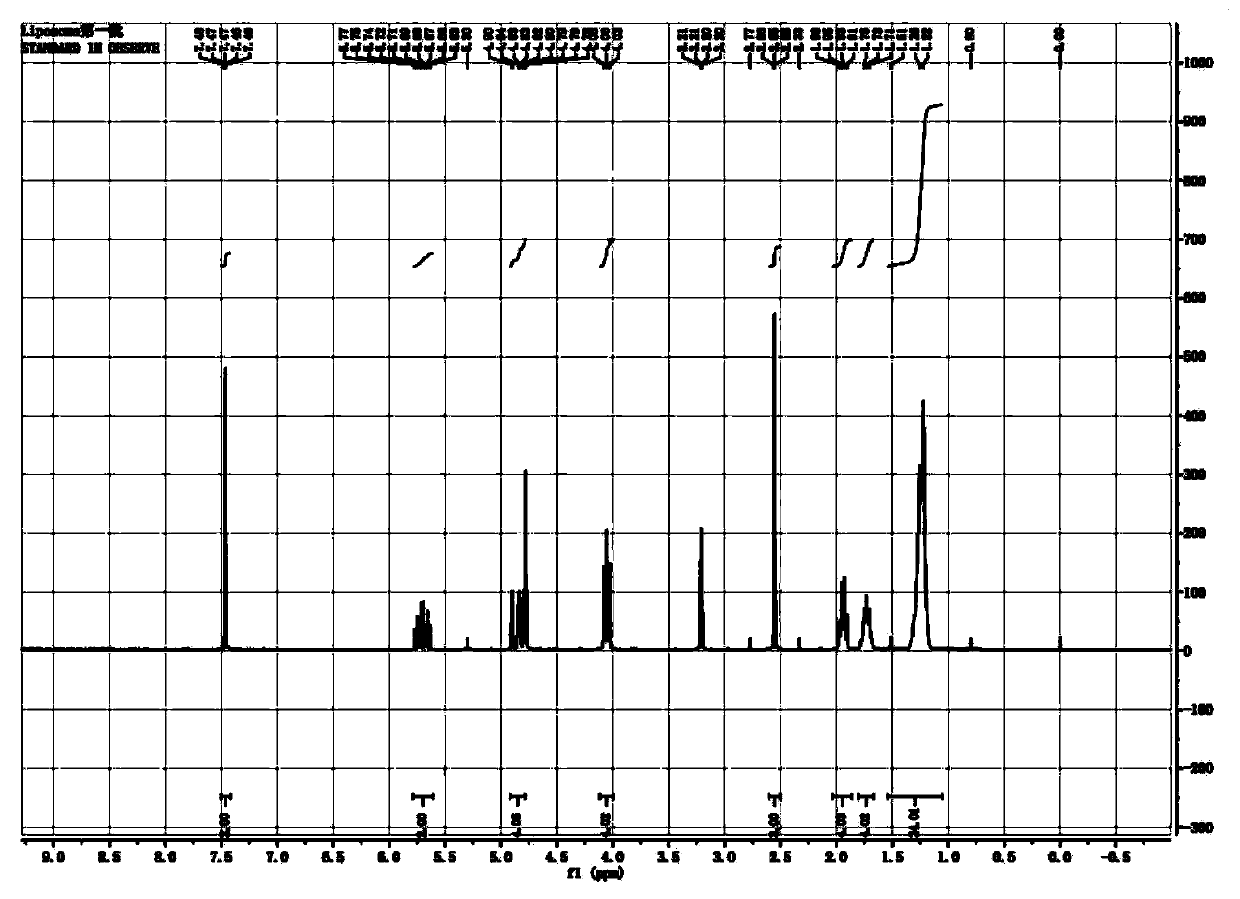Poly-lipidosome co-loading SERS (Surface-Enhanced Raman Scattering) substrate with reactivity, and construction method and application thereof
A construction method, a technique for polylipid, applied in nanotechnology for sensing, nanotechnology for materials and surface science, nanotechnology, etc., capable of addressing reactivity limitations, surface binding of organic or inorganic components Weak ability and other problems, to achieve the effect of good stability
- Summary
- Abstract
- Description
- Claims
- Application Information
AI Technical Summary
Problems solved by technology
Method used
Image
Examples
Embodiment 1
[0048] (1) The preparation method of polysome-gold nanoparticles (Polysome-Au) is as follows: the synthetic method is as follows: figure 1 shown.
[0049] 1. Ionic liquid-based liposome (Liposome)
[0050] Take 30.00mL toluene in a 100mL round-bottomed flask, add 2-methylimidazole (3.05mmoL, 0.25g), triethylamine (3.65mmoL, 0.51mL) and bromo-11-decene (6.10mmoL, 1.33mL), reacted at 90°C for 48h. Cool to room temperature after completion of the reaction, remove the amine salt solids by suction filtration, evaporate the solvent to dryness from the obtained filtrate, wash with n-hexane several times, and evaporate the solvent to dryness again, the resulting product is mixed with acetonitrile-ethyl acetate (volume ratio about 1:3 ) recrystallization, and vacuum drying to obtain a yellow-white powder, which is a liposome monomer.
[0051] Dissolve 100.0 mg of liposome monomer in 100.0 mL of deionized water, and disperse it ultrasonically for 1 hour to obtain a clear and transpar...
Embodiment 2
[0081] Example 2 SERS detection of Polysome-Au-MO
[0082] (1) Sample preparation:
[0083] Add excess methyl orange (MO) to a certain concentration of Polysome-Au aqueous solution, and carry out ion exchange reaction under magnetic stirring. After the reaction, the product was centrifuged and washed, and dried to obtain Polysome-Au (Polysome-Au-MO) modified by the organic anion Raman probe methyl orange (MO).
[0084] The prepared Polysome-Au-MO was smeared on a glass slide and flattened for SERS detection. The test conditions are as follows, excitation wavelength: 633nm, power: 1%, instrument: Renishaw in Via (UK). For relevant SERS characterization see Figure 18 .
[0085] As an important azo dye, methyl orange is not only widely used as an indicator, but also often used as a probe molecule in Raman detection systems due to its structural characteristics and vibration modes. Based on this, in order to detect the detection performance of the ionic liquid-based polylipo...
PUM
| Property | Measurement | Unit |
|---|---|---|
| Particle size | aaaaa | aaaaa |
Abstract
Description
Claims
Application Information
 Login to View More
Login to View More - R&D
- Intellectual Property
- Life Sciences
- Materials
- Tech Scout
- Unparalleled Data Quality
- Higher Quality Content
- 60% Fewer Hallucinations
Browse by: Latest US Patents, China's latest patents, Technical Efficacy Thesaurus, Application Domain, Technology Topic, Popular Technical Reports.
© 2025 PatSnap. All rights reserved.Legal|Privacy policy|Modern Slavery Act Transparency Statement|Sitemap|About US| Contact US: help@patsnap.com



